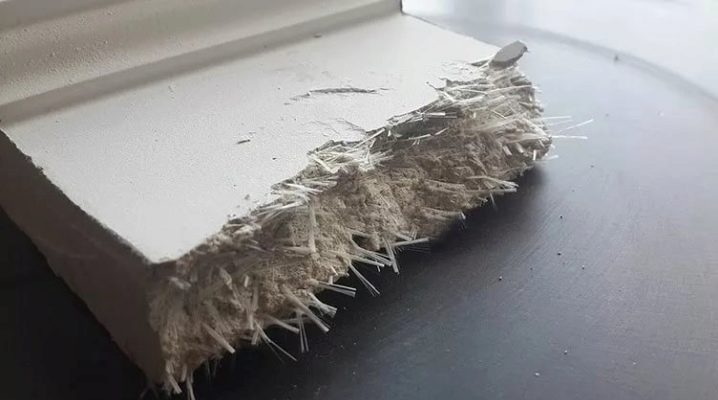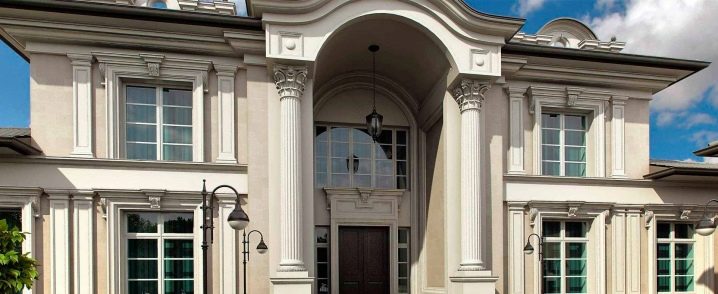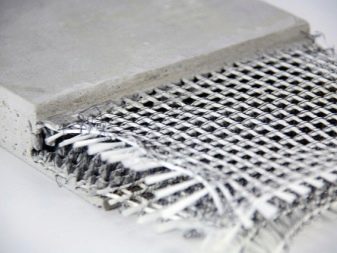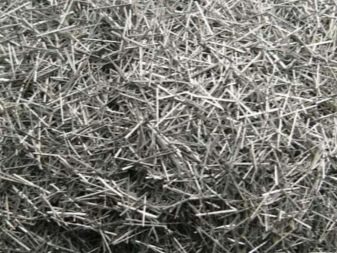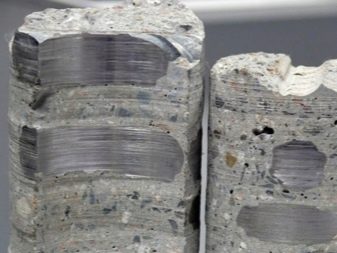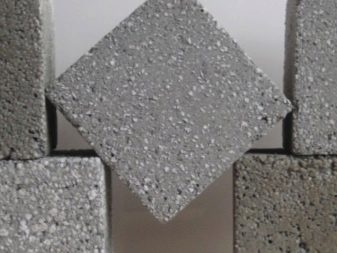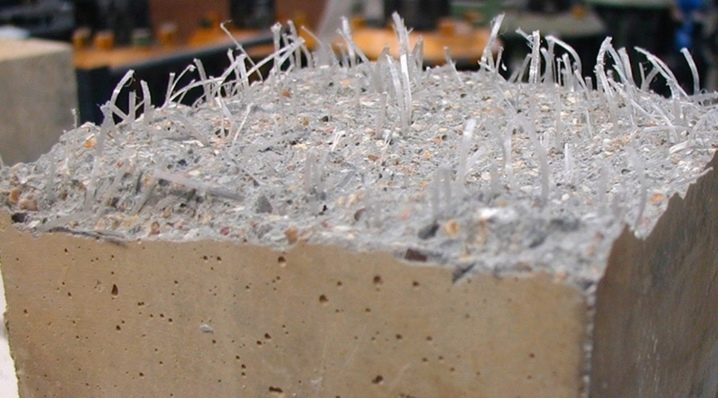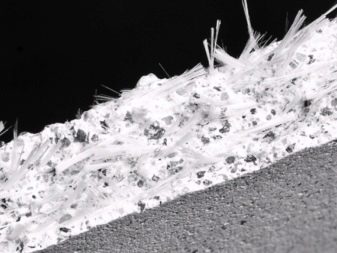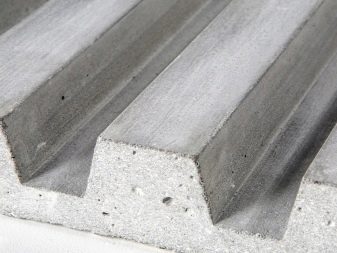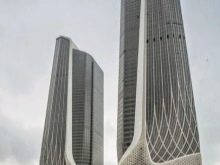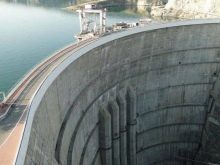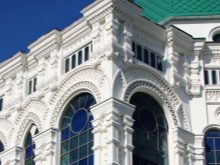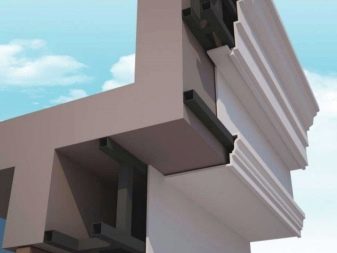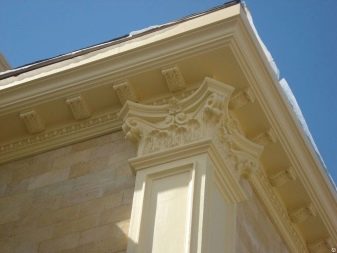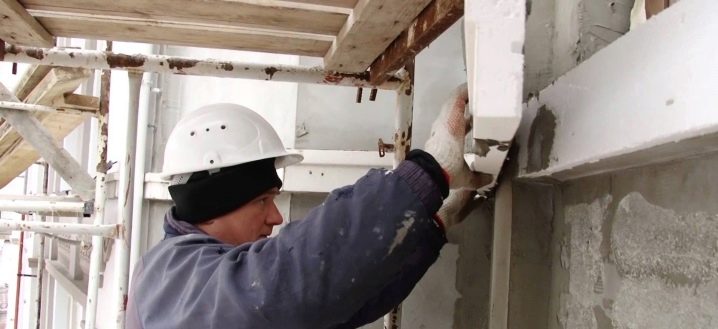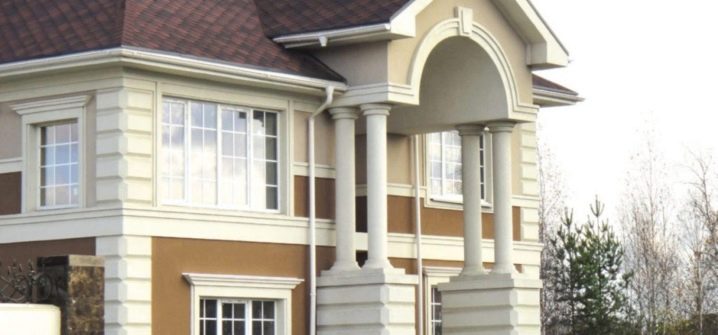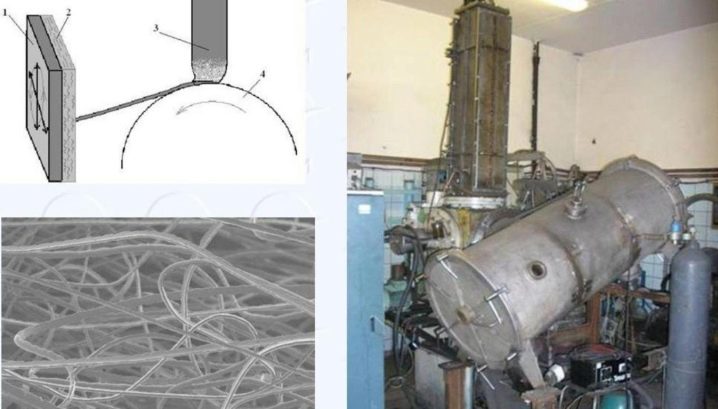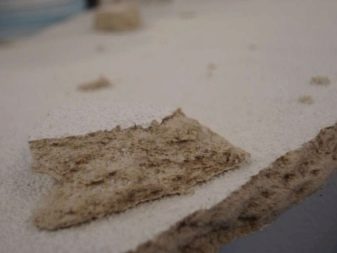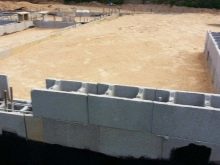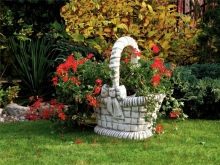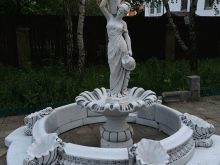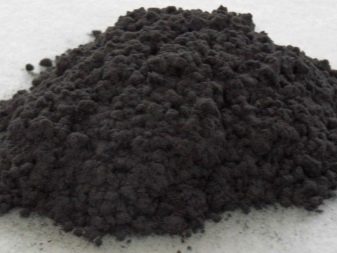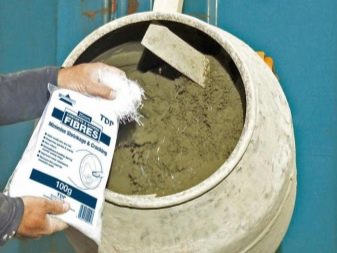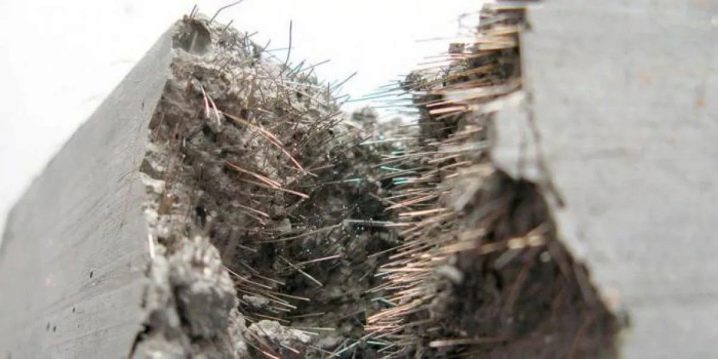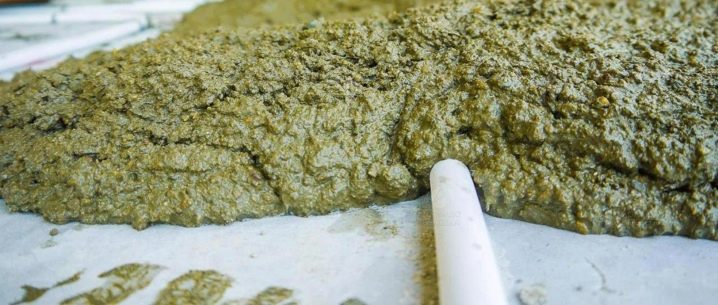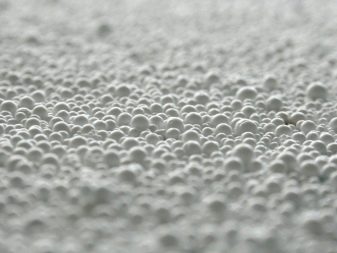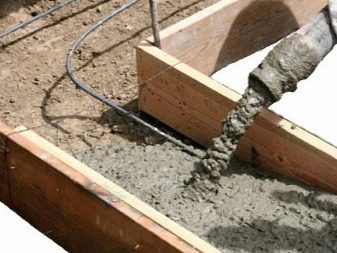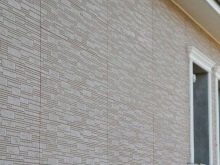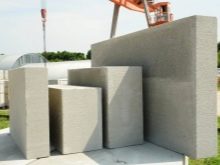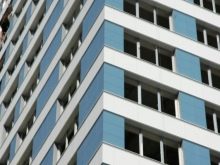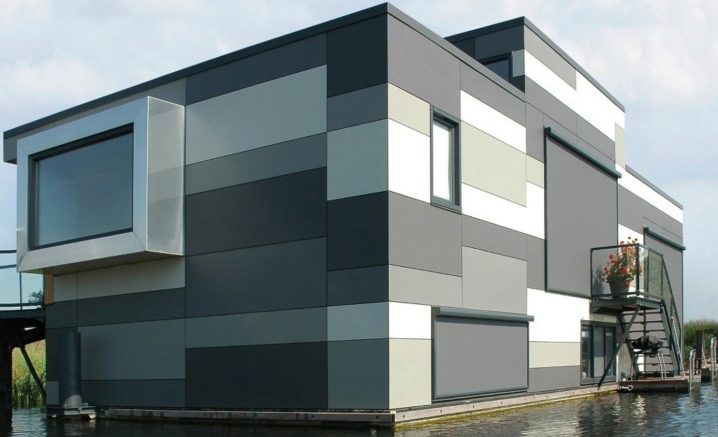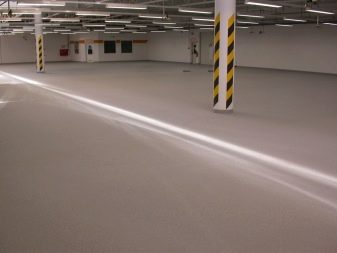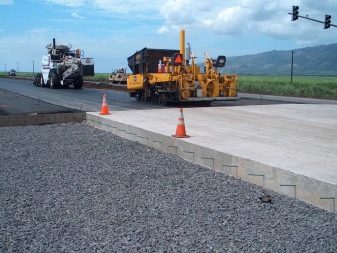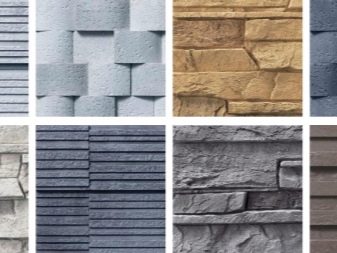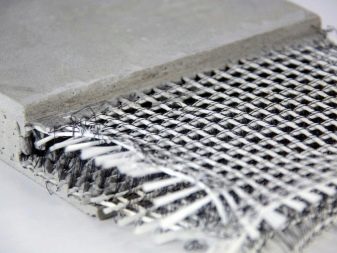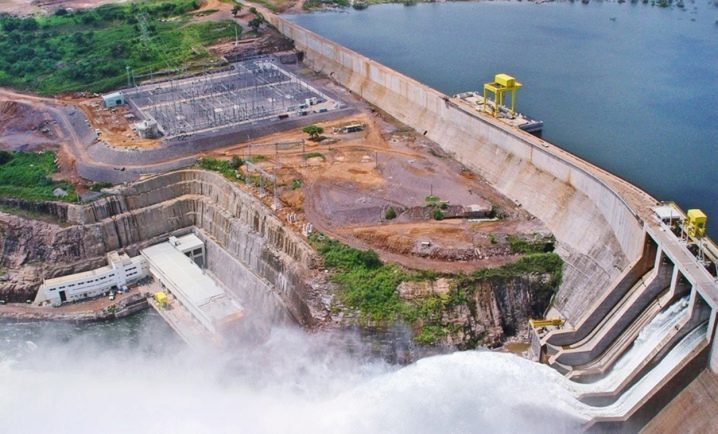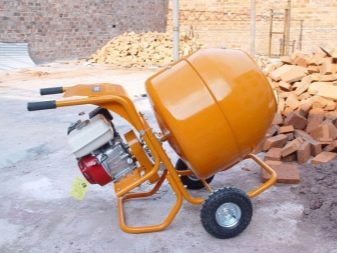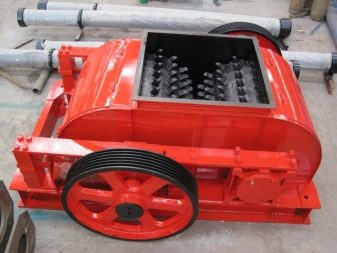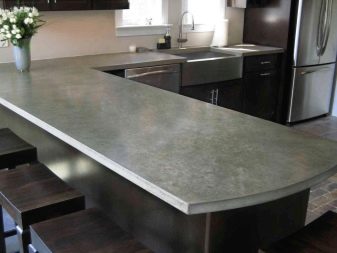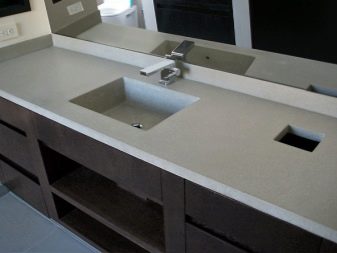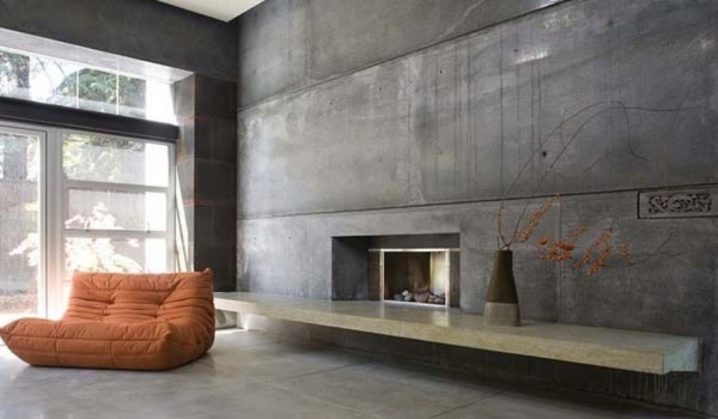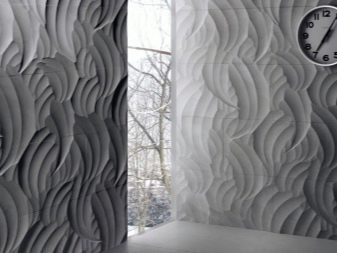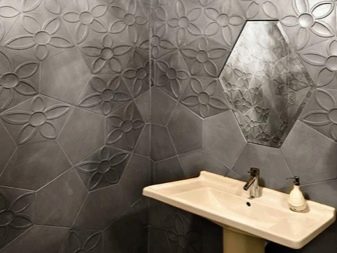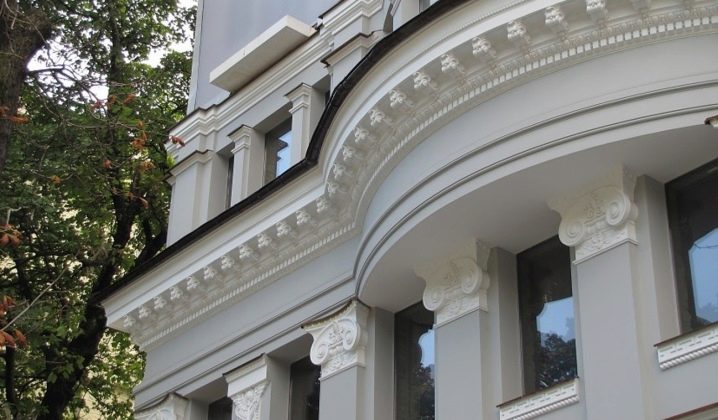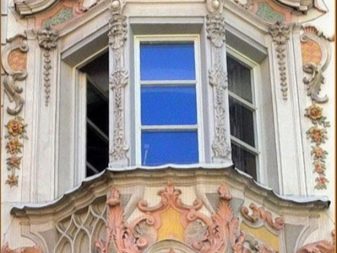Fiber concrete: what is it and where is it used?
Technical progress abundantly supplies people with new and new materials for construction work. Among the relatively recent developments of this kind it is worth noting fibrobeton. The features of this material are useful to know even to those who are not going to use it - just for common development.
Description
Fiber concrete is a kind of concrete that is reinforced over the entire area using metal and non-metallic inclusions. For the hardening of the material is actively used steel wire and carbon fiber, polyamide, glass, acrylic, polyester, viscose, nylon, basalt. The demanded fiber of steel turned out to be in demand, which is obtained by cutting a wire with a section of 0.1–0.5 mm into sections from 10 to 50 mm.Only slightly inferior to him fiberglass, popular due to significant technical qualities. The use of other synthetic materials helps to make the process more economical and give the material a variety of characteristics.
Fiber concrete compared to concrete of the usual type:
- better resists stretching and tearing;
- has a higher elasticity;
- does not sit down;
- resistant to cracking;
- resistant to the effects of cold;
- Immune to toxins and atmospheric elements;
- little wear out.
At the same time, the strength and plasticity of the material are also at a decent level. If the solidified layer is cut, a homogeneous structure will be visible, which is penetrated to the full thickness by thin filaments running in an arbitrary direction.
Experts can confidently say, seeing the features of the inclusions, what are the properties of the sample and how exactly it is obtained.
In addition to technological nuances, there are generally accepted conditions, such as:
- compatibility of the original concrete with the fiber used;
- strictly defined proportion between them;
- uniform distribution of fibers in the mass.
Purpose
Products made of fiber-reinforced concrete are used in various fields.It is used in the foundations of skyscrapers, and in road construction, and in the construction of hydraulic structures. If fiberglass is added, it is possible to use such a material to contain noise, to clean water and to decorate facades.
Even the most mechanically loaded structures using fiber-reinforced concrete will work 10–20 times longer than ordinary cast stone.
Among the architectural decorative elements of the material in question, an important place is occupied by curtain rods.
To obtain them, a variety based on glass fiber is used. Experts select the technology and determine the nuances taking into account the height of the structure and its distance from the wall. Sometimes the cornice is divided into several blocks with different heights; if the extension is large, the installation is carried out on a subsystem of metal elements. The walls are made from 2 to 4 cm in thickness, and the length of a single element can be 70–100 cm. Often, parts made of ferrous metals, galvanized or stainless steel are used for mounting eaves.
For fastening the eaves apply the pass-through, hidden or mixed method. Fiber concrete pillars are an excellent solution for those who want to take care not only about the appearance of the facade, but also about the interior of the room.The main part of the columns takes a significant share of the load, reducing the pressure exerted on other elements of buildings. Therefore, in addition to purely design advantages, these parts allow you to construct massive buildings. They indirectly affect the perception of facades, reducing the likelihood of cracking.
Kinds
To properly apply fiber concrete, you need to thoroughly understand the features of its individual types. The earliest samples of this material were obtained before the First World War. At that time, there wasn’t much variety of synthetic materials, and therefore material scientists' experiments were conducted with chopped wire. Fiber today normalized by the requirements of the state standard. The steel filling is divided into anchor and wave group, the ends of the segments in these two cases must be bent.
To get the metal fiber for the frame, the raw material is most often processed purely mechanically, on drawing machines, rolling mills or cutting equipment. Choose technology depending on what diameter of fiber needs to be received. Extremely thin threads are made by passing steel through the holes in the diamond parts.
Steel fiber is good in strength, but it is heavy. Due to the high tendency to corrosion for the facade of such a material is almost not suitable.
Mineral fiber is obtained from molten volcanic rocks, usually basalt. The properties of the raw materials affect the characteristics of the material, it is resistant to mechanical stress, to contact with alkalis and acid. Basalt fiber does not ignite and makes the concrete to which it is added, three times stronger than a conventional mortar.
The additives made on the basis of such a mixture are used for various purposes:
- fixed formwork;
- wall panels;
- small architectural forms;
- fountain preparation;
- production of parts for the reconstruction of houses;
- moldings in the eaves;
- slabs at road construction.
Glass fiber concrete is produced by pulling the molten mass of glass using special equipment. Since glass is quite different in composition, it can flexibly vary, designers can achieve impressive mechanical characteristics. Disperse reinforcement is assembled into bundles of a given diameter. Carbon fiber is made by processing raw materials with considerable heat. This material has a number of excellent characteristics:
- resistance to mechanical stress;
- immunity to aggressive chemical factors;
- small elongation when heated;
- no risk of corrosion and amazing adhesion;
- incombustibility.
The problem with the carbon thread is associated only with its high price. Polypropylene fiber concretes exceed any sample without reinforcement in shock resistance. But at the same time stretching and compression is transferred much worse. Also, polypropylene is not sufficiently resistant at high temperatures, and there is a high risk to purchase frankly poor-quality raw materials. The fact is that the variation in the characteristics of the material is huge, and a professional cannot distinguish a standard product from waste by eye.
Specifications
Russian GOST provides for the production of various types of fiber-reinforced concrete. The chemical and fractional composition of the mixture directly affect its practical parameters. So, adding fiberglass provides:
- specific gravity from 1700 to 2250 kg per 1 cu. m;
- thermal conductivity not lower than 0.52 and not higher than 0.75 W / cm2 x ° С;
- bending tensile strength - 210–320 kg per 1 sq. km. cm.
These properties allow to reduce the thickness of the manufactured structures and significantly reduce its weight. A combination of reduced load with environmental safety significantly expands the application space of products. Fiber concrete has the greatest popularity where it requires minimal risk of cracking and excellent resistance to impact. For flooring difficult to find the best solution. The low weight of fiber-reinforced concrete blocks simplifies their use for finishing buildings with decorative elements of various types.
The proportions of the mixture based on polystyrene depend on the required density. So, if it is 200 kg per 1 cu. m, you will need 100 liters, 200 kg of cement itself and 0.84 cu. m crushed polystyrene. The amount of crumbs will not change with an increase in density, only additional water and a binder are added. The resulting mixture is perfect for pouring the floor, and for use inside the formwork.
You can learn more about the process of manufacturing products from fiber-reinforced concrete by watching the following video.
Manufacturers Overview
The production of fiber-reinforced concrete is adjusted in Russia at a rather high level.There are no compelling reasons to prefer imported products. Excellent results are achieved by using brand blends. "3Dbeton", also, experts recommend to focus on brands. ROSPAN and LTM. Thanks to modern equipment and the latest technological methods, it is possible to meet the bar that Japanese concerns are setting on the world market. The choice between manufacturers can be made, starting only from logistics, because it is not possible to find a practical difference between their products.
How to choose?
Much more important than the inscriptions on the label will be the species composition and concentration of the added fiber. So, if you want to achieve the highest strength, it is recommended to buy concrete, which introduced a metal fiber mixed with fiberglass. Then it will be possible to restrict ourselves to the minimum possible thickness of the walls, and therefore, to facilitate the foundation work and reduce the cost of them. The described recipe also allows fibrobeton:
- remain durable under breaking load;
- maintain their valuable qualities under the influence of various substances and weather conditions;
- do not lose utility at high air temperature and with strong heating of the stone itself;
- relive freezing and thawing repeatedly without compromising performance.
Such a composite is able to withstand even the load arising from the movement of railway transport, during takeoff and landing of aircraft. Glass fiber allows you to use concrete mix for covering facades, for finishing production buildings, unable to absorb dirt and easy to clean when clogged. Steel filling is used if you need to arrange the floors of the covered and open parking areas, the road surface, and the strengthened foundation. From such fiber-reinforced concrete it is also possible to build secondary hydraulic engineering complexes, concrete tanks.
Polypropylene-based mixtures are recommended for use in the preparation of foam blocks, porous composite and minor buildings. Due to the diverse color spectrum of fiber-reinforced concrete, consumers can choose whatever look it wants - even an ideal imitation of natural stone. If you want to make textile, sometimes used viscose and cotton.
Important: fibrobeton is more expensive than a simple solution, so you will need to carefully calculate the need for it and very accurately select the appropriate type of mixture. No less important is the information on the quality characteristics of the raw materials: experienced buyers always require to provide documents on laboratory checks.
Use cases
Production of fiber-reinforced concrete for hydraulic structures is justified because a higher modulus of elasticity, strength in compression and tension allow to reduce the stresses in the lining layer.
According to laboratory testing, the practical properties are influenced not only by the type of fiber used, but also by the fiber length and diameter. Disperse reinforcement helps to maximize the mechanical properties.
Obtaining fiber-reinforced concrete with your own hands requires the use of both a concrete mixer and a crushing device. Adding sand and cement immediately after grinding (and not when stirring) helps to achieve maximum homogeneity of the mixture.
Manual manufacture of fiber-reinforced concrete means that it is necessary to carefully control the absence of excessive concentration of fiber in certain places.This itself delays the process by 30% at least compared to the mechanized process. But if you comply with all technological standards, you can guarantee compliance with the same characteristics as in mass production. Fiber concrete is made even furniture - stone countertops, sinks and other products. Developers and designers are able to create really impressive products based on this material.
Beautiful examples in the interior and exterior
This is how the interior finish of the apartment with fiber-reinforced concrete may look like. At first, it seems gray and inconspicuous, but it is worth looking at how it becomes clear - this has its own special charm.
It is possible and not to choose such a dark plot, the textured tiles of light tones with an interesting and thoughtful ornament appear just as well.
Glass fiber concrete looks great even outside buildings - on this facade it looks exactly like a natural stucco of a classic sample.
If desired, you can also order a one-color wall, the decoration of which is provided only by the relief of the surface.
Arches and columns found in the design of facades of buildingsare the most complex varieties of decor. But fibrobeton not only simplifies their creation, it also guarantees durability, long service. From the same material, by the way, reliable decorative railings are also quite good. On the basis of fiber-concrete mixtures, you can create and abundant floral decor, corresponding to the rococo style. Resistance to moisture and mechanical destruction will allow you to enjoy design achievements for a long time.
